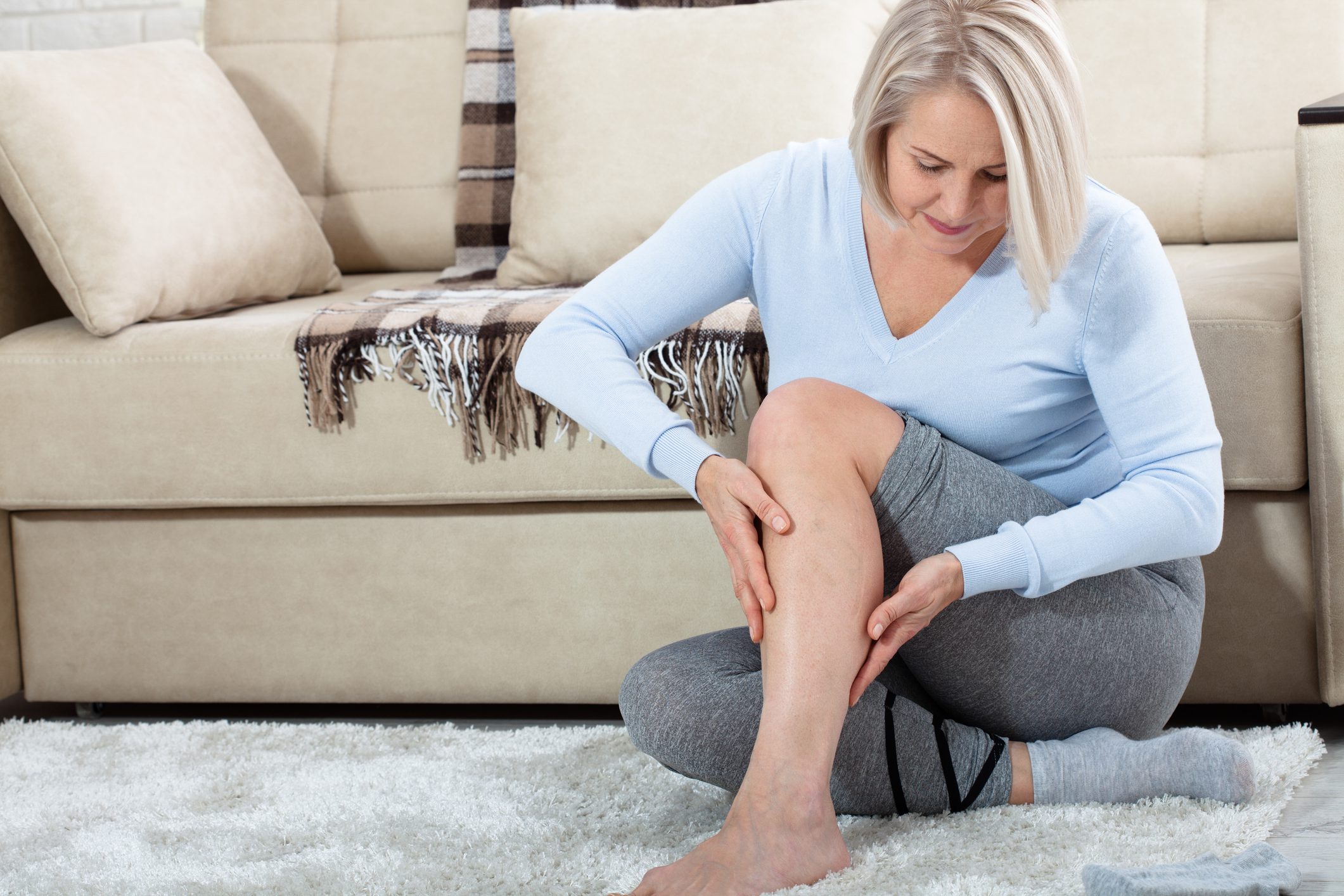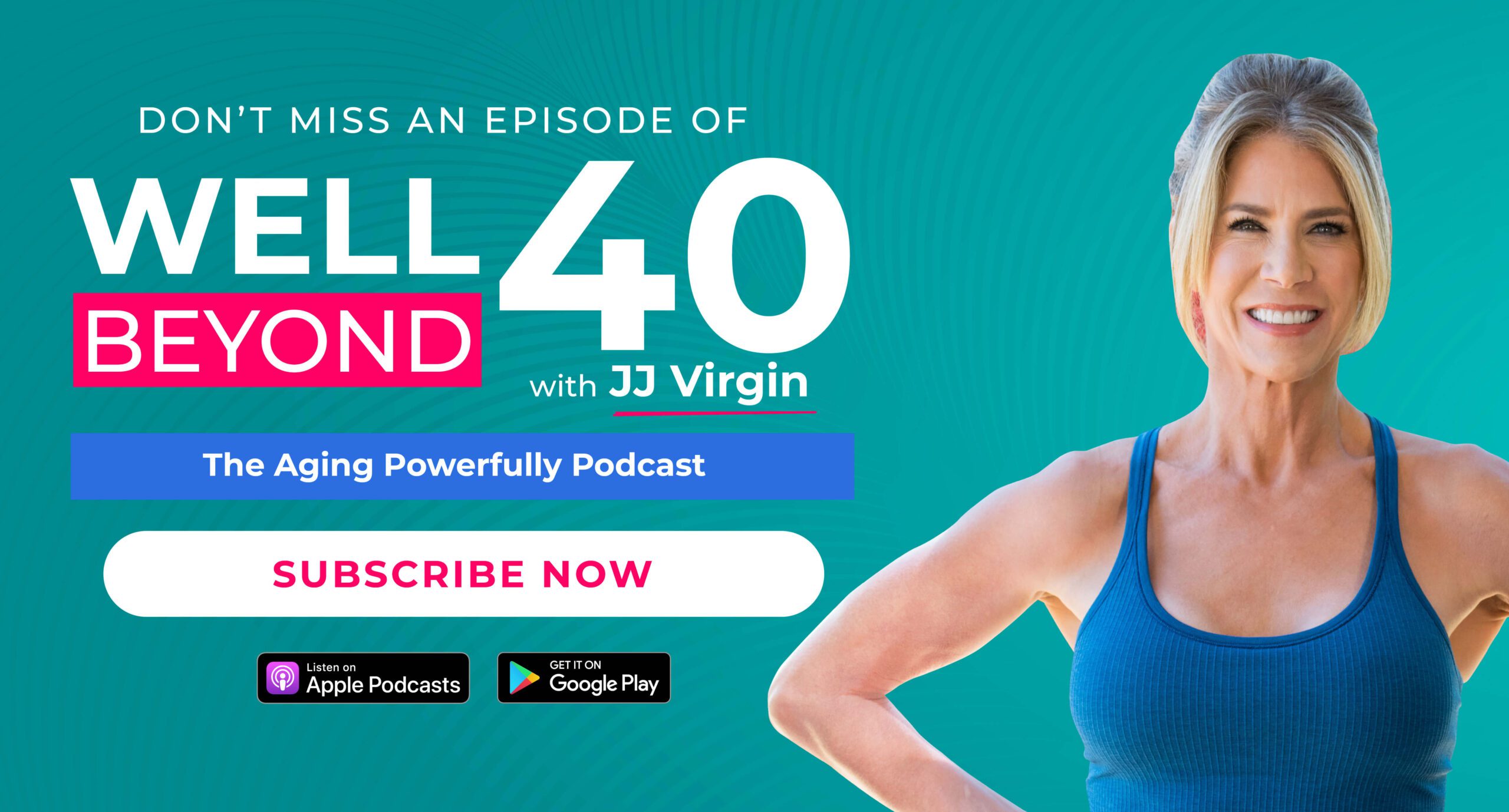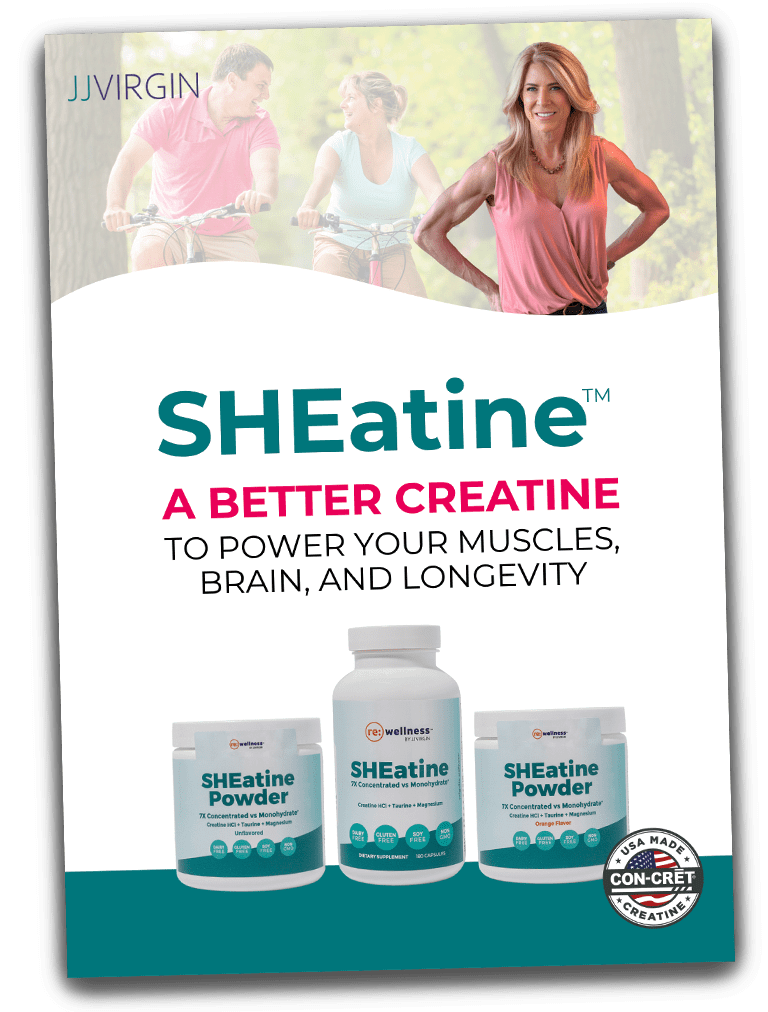Maintaining strong bones and healthy joints becomes more critical as you age. About 1 in 2 women over 50 will experience a bone fracture due to osteoporosis.1
However, it’s not just your bones at risk—joint issues are another challenge many women face. In fact, 7 out of 10 women begin to suffer from joint pain as early as age 35.2 These obstacles can significantly impact your quality of life, making staying active and enjoying the things you love more difficult.
Optimizing vitamin D levels might be the solution. This vitamin helps keep your bones strong and joints flexible, especially as menopause approaches.3, 4
How Menopause Impacts Bone and Joint Health
As you age, bone density and joint health naturally decline due to the wear and tear your body goes through, and menopause can dramatically accelerate this process.5, 6 Many women experience increased bone fragility and joint stiffness during this transition because the drop in estrogen during menopause can significantly affect bone and joint health.
Estrogen helps maintain bone strength by balancing bone breakdown and formation. Low estrogen weakens bones, making them more prone to fractures, even from minor falls.7, 8
Estrogen also protects joints by keeping the cartilage that cushions them healthy. When estrogen levels drop, this protection weakens, leading to more joint pain and stiffness. Menopause can increase chronic inflammation as well, which may contribute to arthritis. This condition causes the cartilage to break down, making bones rub against each other, resulting in pain, swelling, and less mobility.9-12
How Vitamin D Can Protect Bone and Joint Health
Vitamin D is essential for maintaining bone and joint health. It aids in calcium absorption, the key mineral that keeps bones strong and dense. Additionally, vitamin D regulates calcium and phosphorus levels in the blood, both of which are crucial for building strong bones. It also enhances muscle function, reducing the risk of falls that can cause fractures, and helps control inflammation, protecting bones from damage.13-15
Vitamin D plays a crucial role in supporting joint health, too. It helps protect cartilage and reduces joint pain and stiffness. Without sufficient vitamin D, your joints are more susceptible to wear and tear, leading to discomfort and limited mobility.16, 17
How to Tell If You Have a Vitamin D Deficiency
Around 35% of adults in the United States have a vitamin D deficiency. Around menopause, that percentage increases, which can have serious consequences for bone and joint health. One study found over half of postmenopausal women were deficient in vitamin D.18, 19
Bone- and joint-related symptoms of low vitamin D include:
- Bone pain and tenderness, an early signal that your bones may be weakening. Left unchecked, your bones can become fragile, raising the likelihood of fractures.
- Joint pain and stiffness, especially in the knees, hips, and spine. This can make daily movements uncomfortable and limit mobility.20, 21
The NIH Office of Dietary Supplements recommends that most people maintain vitamin D levels of 50 nmol/L (20 ng/mL) or higher for bone and overall health. If your levels fall below 30 nmol/L (12 ng/mL), your bones may weaken, putting your health at risk.22 Some experts suggest that these current guidelines may be too low for optimal health, particularly if you live in northern latitudes, have darker skin, or spend little time outdoors.23, 24
Talk with your functional-medicine doctor or other healthcare practitioner to determine the ideal measurement for your needs.
This at-home vitamin D test from YourLabwork offers a convenient way to gain valuable health insights by accurately measuring your vitamin D levels.**
How to Make Sure You Get Enough Vitamin D
Vitamin D comes from three primary sources: sunlight, food, and supplements. Sunlight is the most natural way to boost your vitamin D levels. Aim for 10-30 minutes of unprotected sun exposure several times a week (the darker your skin tone, the more time you need), but be cautious of peak sun hours to protect your skin from damage.25-27
The National Institute of Health recommends a daily vitamin D intake of 15 mcg (600 IU) for adults aged 51-70. For those over 70, the recommended intake increases to 20 mcg (800 IU) to support bone health and overall well-being. Some researchers believe these recommendations are too low. The Linus Pauling Institute, for instance, recommends that healthy adults take around 2,000 IU (50 mcg) of supplemental vitamin D daily.28, 29
A lab test will help you determine your supplement needs, but it’s important to start with food first. That said, there aren’t a whole lot of foods with vitamin D, especially if you don’t eat animal products. Here are some options to incorporate into your diet:
- Wild rainbow trout (3 oz cooked): 482.4 IU
- Wild coho salmon (3-oz cooked): 383 IU
- Atlantic sardines (3.75-oz can, canned in oil and drained): 178 IU
- Large hard-boiled egg: 43.5 IU
- Skipjack tuna (3-oz portion cooked): 40 IU
- Shiitake mushrooms (1 cup cooked): 40.6 IU30
Unfortunately, many people don’t consume these foods regularly or get enough sun exposure. This makes it challenging to meet vitamin D needs naturally.31
A vitamin D supplement is your best option in those situations. When choosing one, look for a supplement that combines vitamin D with vitamin K. Vitamin K helps direct calcium to your bones, ensuring it’s used where it’s needed and preventing it from depositing in your arteries, which can lead to cardiovascular issues. Vitamins D and K work together to strengthen bones and support overall health.32
A high-quality vitamin D supplement should provide therapeutic levels of vitamin D and K in their most effective forms. Look for a supplement containing cholecalciferol (vitamin D3), which is more effective at raising and maintaining vitamin D levels than ergocalciferol (vitamin D2).33 Avoid commercial brands that offer low doses of vitamin D and use filler oils like soybean oil, which can trigger food intolerances and cause inflammation.
A Superior Vitamin D for Joint and Bone Health
All vitamin D supplements aren’t equal. We formulated Vitamin D Plus to go above and beyond others, delivering a clinically significant dose of 5,000 IUs (125 mcg) of vitamin D3, along with both forms of vitamin K (K1 and K2). We’ve also added geranylgeraniol (GG), a naturally occurring compound that supports optimal bone and arterial health while maintaining a balanced immune system.
References:
- John Hopkins Medicine: Osteoporosis
- Fundación Internacional de La Artrosis: 7 out of 10 women suffer FROM joint pain from the age of 35 ONWARDS
- Office of the Surgeon General (US). Bone Health and Osteoporosis: A Report of the Surgeon General. Rockville (MD): Office of the Surgeon General (US); 2004. 6, Determinants of Bone Health. Available from: https://www.ncbi.nlm.nih.gov/books/NBK45503/
- Harvard Health: Essential nutrients your body needs for building bone
- Finkelstein JS, Brockwell SE, Mehta V, Greendale GA, Sowers MR, Ettinger B, Lo JC, Johnston JM, Cauley JA, Danielson ME, Neer RM. Bone mineral density changes during the menopause transition in a multiethnic cohort of women. J Clin Endocrinol Metab. 2008 Mar;93(3):861-8. doi: 10.1210/jc.2007-1876. Epub 2007 Dec 26. PMID: 18160467; PMCID: PMC2266953.
- Medical News Today: What causes menopause joint pain and what to do about it
- Office of the Surgeon General (US). Bone Health and Osteoporosis: A Report of the Surgeon General. Rockville (MD): Office of the Surgeon General (US); 2004. 2, The Basics of Bone in Health and Disease. Available from: https://www.ncbi.nlm.nih.gov/books/NBK45504/
- Charde SH, Joshi A, Raut J. A Comprehensive Review on Postmenopausal Osteoporosis in Women. Cureus. 2023 Nov 9;15(11):e48582. doi: 10.7759/cureus.48582. PMID: 38090417; PMCID: PMC10711335.
- Healthline: Joint Pain and Menopause: Causes and What to Do
- Malutan AM, Dan M, Nicolae C, Carmen M. Proinflammatory and anti-inflammatory cytokine changes related to menopause. Prz Menopauzalny. 2014 Jun;13(3):162-8. doi: 10.5114/pm.2014.43818. Epub 2014 Jun 30. PMID: 26327849; PMCID: PMC4520358.
- Medical News Today: What causes menopause joint pain and what to do about it
- Cleveland Clinic: Osteoarthritis: Symptoms, Causes & Treatment Options
- Laird E, Ward M, McSorley E, Strain JJ, Wallace J. Vitamin D and bone health: potential mechanisms. Nutrients. 2010 Jul;2(7):693-724. doi: 10.3390/nu2070693. Epub 2010 Jul 5. PMID: 22254049; PMCID: PMC3257679.
- Mei Z, Hu H, Zou Y, Li D. The role of vitamin D in menopausal women’s health. Front Physiol. 2023 Jun 12;14:1211896. doi: 10.3389/fphys.2023.1211896. PMID: 37378077; PMCID: PMC10291614.
- Harvard Health: Essential nutrients your body needs for building bone
- Garfinkel RJ, Dilisio MF, Agrawal DK. Vitamin D and Its Effects on Articular Cartilage and Osteoarthritis. Orthop J Sports Med. 2017 Jun 20;5(6):2325967117711376. doi: 10.1177/2325967117711376. PMID: 28680892; PMCID: PMC5480771.
- Jones AN, Hansen KE. Recognizing the musculoskeletal manifestations of vitamin D deficiency. J Musculoskelet Med. 2009 Oct;26(10):389-396. PMID: 21984863; PMCID: PMC3188408.
- Cleveland Clinic: Vitamin D Deficiency: Causes, Symptoms & Treatment
- Kalra, S., Kalra, B., & Khandelwal, S. K. (2011). Vitamin D deficiency in postmenopausal women in Haryana. World Journal of Life Sciences and Medical Research, 1(11), 1–5.
- Yale Medicine: Vitamin D Deficiency
- Healthline: Is There a Connection Between Vitamin D and Joint Pain?
- NIH Office of Dietary Supplements: Vitamin D – Health Professional Fact Sheet
- Healthline: 25-Hydroxy Vitamin D Test: Purpose, Procedure, and Results
- Ames BN, Grant WB, Willett WC. Does the High Prevalence of Vitamin D Deficiency in African Americans Contribute to Health Disparities? Nutrients. 2021 Feb 3;13(2):499. doi: 10.3390/nu13020499. PMID: 33546262; PMCID: PMC7913332.
- Healthline: How to Safely Get Vitamin D From Sunlight
- Mead MN. Benefits of sunlight: a bright spot for human health. Environ Health Perspect. 2008 Apr;116(4):A160-7. doi: 10.1289/ehp.116-a160. Erratum in: Environ Health Perspect. 2008 May;116(5):A197. PMID: 18414615; PMCID: PMC2290997.
- Health: I Sat in the Sun for 15 Mins Daily: Editor’s Experience
- NIH Office of Dietary Supplements: Vitamin D – Health Professional Fact Sheet
- Linus Pauling Institute: Micronutrients for Older Adults
- Health: 12 Foods That Are Good Sources of Vitamin D
- Medical News Today: Vitamin D: Benefits, deficiency, sources, and dosage
- van Ballegooijen AJ, Pilz S, Tomaschitz A, Grübler MR, Verheyen N. The Synergistic Interplay between Vitamins D and K for Bone and Cardiovascular Health: A Narrative Review. Int J Endocrinol. 2017;2017:7454376. doi: 10.1155/2017/7454376. Epub 2017 Sep 12. PMID: 29138634; PMCID: PMC5613455.
- Balachandar R, Pullakhandam R, Kulkarni B, Sachdev HS. Relative Efficacy of Vitamin D2 and Vitamin D3 in Improving Vitamin D Status: Systematic Review and Meta-Analysis. Nutrients. 2021 Sep 23;13(10):3328. doi: 10.3390/nu13103328. PMID: 34684328; PMCID: PMC8538717.
*These statements have not been evaluated by the Food & Drug Administration. Products mentioned are not intended to diagnose, treat, cure, or prevent any disease. The views in this blog by JJ Virgin should never be used as a substitute for professional medical advice. Please work with a healthcare practitioner concerning any medical problem or concern.
**I couldn’t make it without supportive relationships, and I bet you feel the same! That’s why my team and I offer you products and services we believe in. If you happen to purchase something I recommend here, I may receive some kind of compensation. However, I only bring you partners whose content and core values will serve you with the same commitment to excellence my team and I strive for every day. Please be in touch with any concerns.




